Themed collection Bioinspired Surfaces and Materials

Bioinspired surfaces and materials
Guest editors Romana Schirhagl, Christoph Weder, Jiang Lei, Carsten Werner and Hans Marcus Textor introduce the Bioinspired Surfaces and Materials issue of Chemical Society Reviews.

Chem. Soc. Rev., 2016,45, 234-236
https://doi.org/10.1039/C5CS90129D
Recent advances in the biomimicry of structural colours
This review presents the recent progress in mimicking the shiny and iridescent structural colours found in nature.
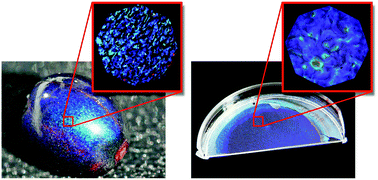
Chem. Soc. Rev., 2016,45, 6698-6724
https://doi.org/10.1039/C6CS00129G
Simulations of inorganic–bioorganic interfaces to discover new materials: insights, comparisons to experiment, challenges, and opportunities
This review covers biomolecular recognition mechanisms on inorganic surfaces at the 1 to 100 nm scale, predictions of materials performance in comparison to experiment, and computational methods. The discussion focuses on biological and organic interfaces of metals, semimetals, biominerals, oxides, and quantum dots.

Chem. Soc. Rev., 2016,45, 412-448
https://doi.org/10.1039/C5CS00890E
Additive manufacturing of biologically-inspired materials
Analogous to the layer-by-layer and site-specific deposition of building blocks carried by living organisms during biomineralization (left), additive manufacturing technologies offer a compelling route for the fabrication of bioinspired heterogeneous architectures for next generation composite materials (right).

Chem. Soc. Rev., 2016,45, 359-376
https://doi.org/10.1039/C5CS00836K
Bioinspired polymer vesicles and membranes for biological and medical applications
Biological membranes play an essential role in living organisms by providing stable and functional compartments, supporting signalling and selective transport. Combining synthetic polymer membranes with biological molecules promises to be an effective strategy to mimic the functions of cell membranes and apply them in artificial systems.

Chem. Soc. Rev., 2016,45, 377-411
https://doi.org/10.1039/C5CS00569H
A colloidoscope of colloid-based porous materials and their uses
Colloids assemble into a variety of bioinspired structures for applications including optics, wetting, sensing, catalysis, and electrodes.
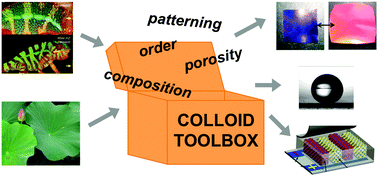
Chem. Soc. Rev., 2016,45, 281-322
https://doi.org/10.1039/C5CS00533G
The springtail cuticle as a blueprint for omniphobic surfaces
Robust omniphobic surface coatings inspired by the cuticular structure of springtails (Collembola).
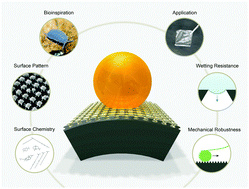
Chem. Soc. Rev., 2016,45, 323-341
https://doi.org/10.1039/C5CS00438A
Supramolecular polymer adhesives: advanced materials inspired by nature
This review highlights bio-inspired design approaches that utilize supramolecular polymers to create adhesives with advanced functionality.
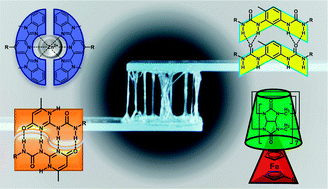
Chem. Soc. Rev., 2016,45, 342-358
https://doi.org/10.1039/C5CS00477B
Nanofabricated structures and microfluidic devices for bacteria: from techniques to biology
We review the use of nanofabricated structures and microfluidic technologies that spatially separate bacteria for quantitative analyses and that provide topological constraints on their growth and chemical communications.
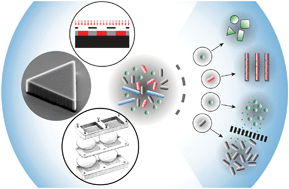
Chem. Soc. Rev., 2016,45, 268-280
https://doi.org/10.1039/C5CS00514K
The mechanics of tessellations – bioinspired strategies for fracture resistance
Two- or three-dimensional tiling improves the fracture resistance of natural and bioinspired materials and may even provide additional functionality.
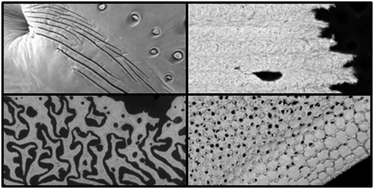
Chem. Soc. Rev., 2016,45, 252-267
https://doi.org/10.1039/C5CS00598A
Recent progress of abrasion-resistant materials: learning from nature
Recent investigations into natural abrasion-resistant materials to explore their general design principles, and the fabrication of bio-inspired abrasion-resistant materials are reviewed.
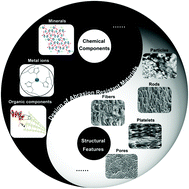
Chem. Soc. Rev., 2016,45, 237-251
https://doi.org/10.1039/C5CS00459D
About this collection
Guest edited by Romana Schirhagl, Lei Jiang, Carsten Werner, Christoph Weder and Marcus Textor, this Chemical Society Reviews themed issue covers the exciting area of bioinspired surfaces and materials – from recent developments to technical breakthroughs and translation to applications. Consisting of invited, authoritative reviews from prominent scientists, this themed issue encompasses topics such as surface wettability and function, optical properties and energy harvesting, biomimetics and biology/medicine, tools and characterisation, and theoretical aspects. New articles will be added to this collection as they are published.